In co-operation with the Estonian Tourist Board
Narva in Estonia is the EU's outpost against Russia, with the border crossing in the centre of the city. You may come here to learn more about the Battle of Narva and the shared Swedish-Estonian history, and to visit Narva Castle. Or why not go for a swim on the fine sandy beach at Narva-Jõesuu rand?
Innehållsförteckning
Narva in Estonia
Narva is the third largest city in Estonia, with just over 67 000 inhabitants. It is located on the border with Russia, making it the EU's outermost outpost in this direction. In fact, it feels a bit like coming to Russia when you arrive here. Around 90 per cent of the population speaks Russian and all signs are in both Estonian and Russian.
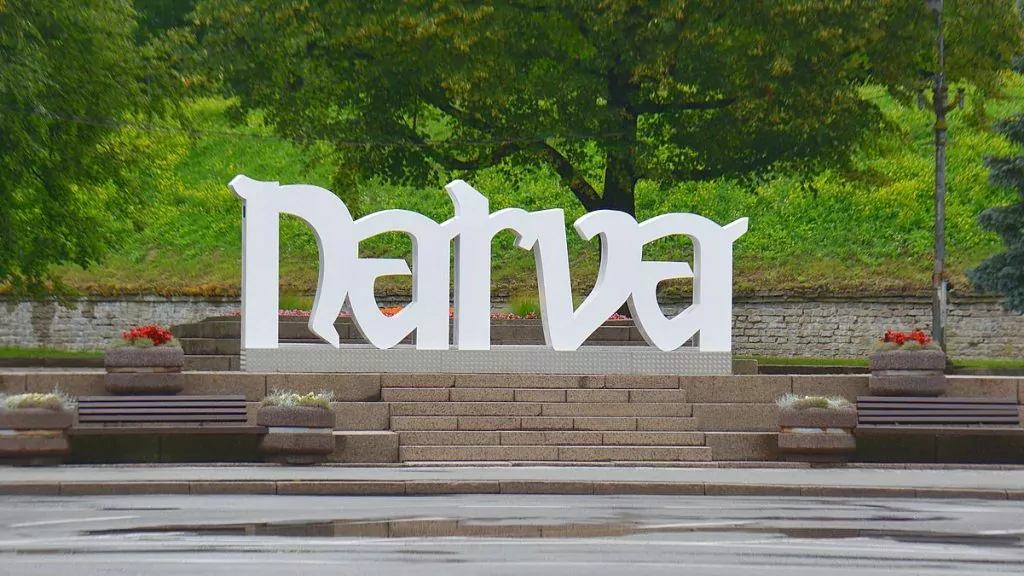
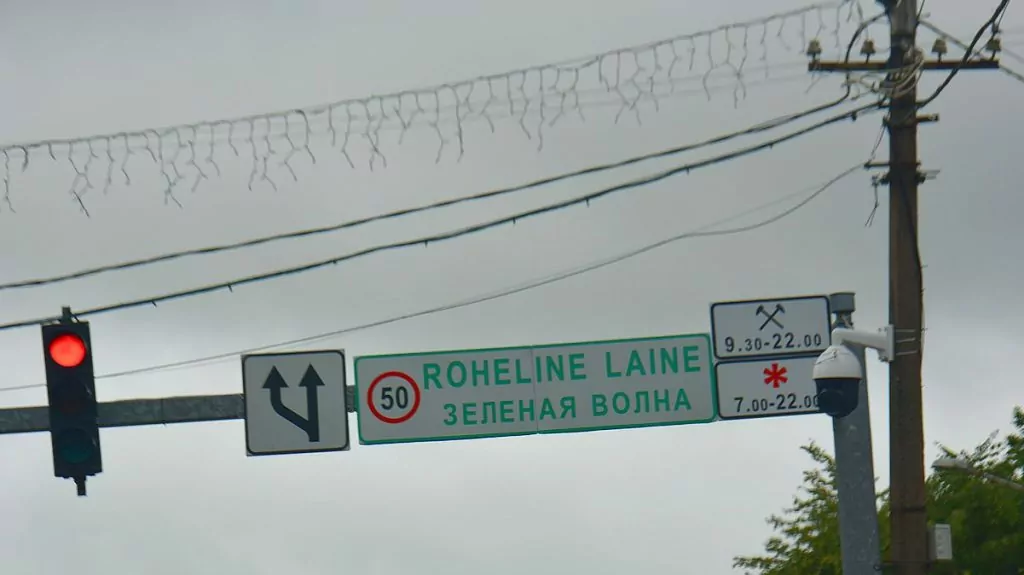
A bit exotic
We must say that coming to Narva in Estonia felt a bit exotic, a bit like being halfway into Russia even though you're still in the EU. Many of the houses are grey and reminiscent of communist-era Eastern Europe, but there are also nice areas to walk around and, above all, lots of history. In the picture, by the way, I (Helena) am playing chess with Paul Keres, who was the Estonian-Soviet grandmaster of chess.
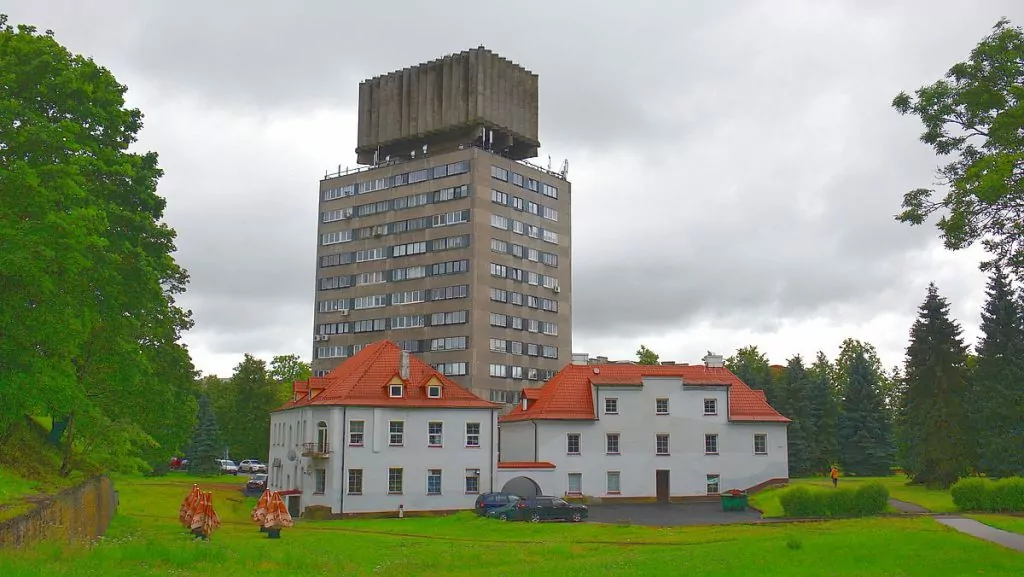
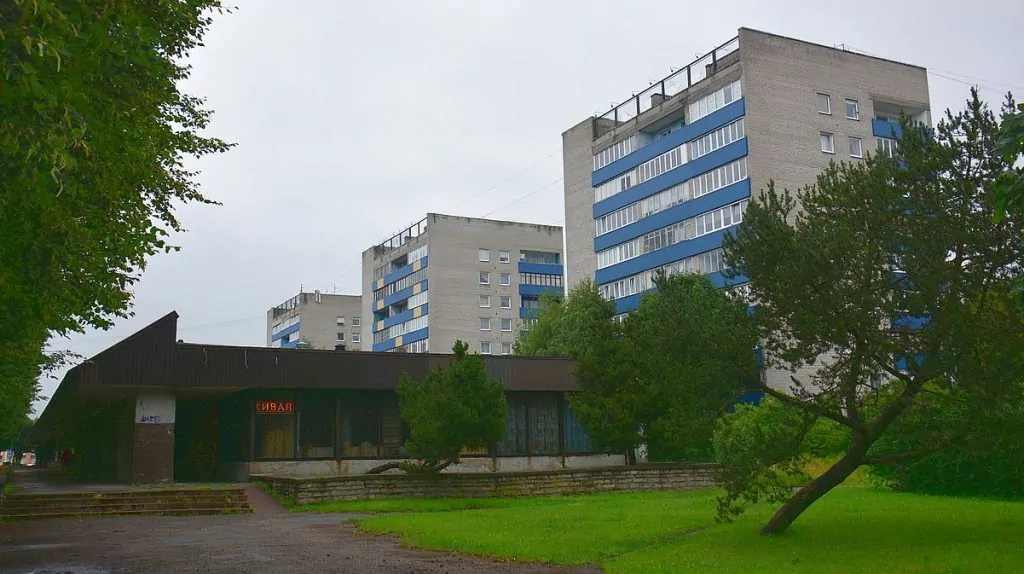
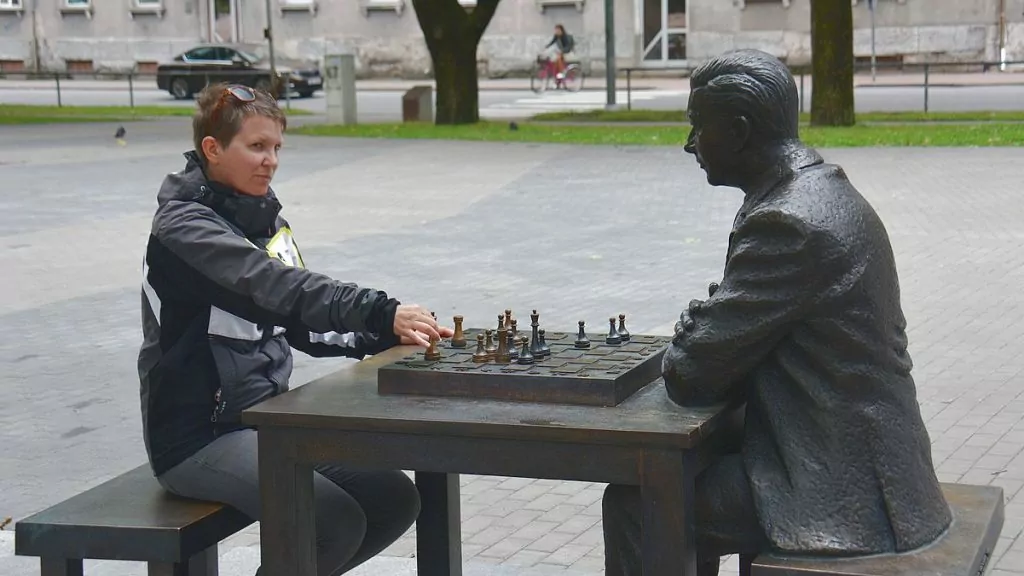
On the border with Russia
In Narva is the border station with Russia, and on the other side is the small Russian town of Ivangorod. Traffic is heavy, and slow, on the bridge between the two border stations. You need a visa to cross the border and we were told that it takes around four hours to cross by car, but much faster on foot.
On the Russian side, petrol and food are much cheaper than in Estonia. Many Estonians get a one-year visa and cross the border to shop.
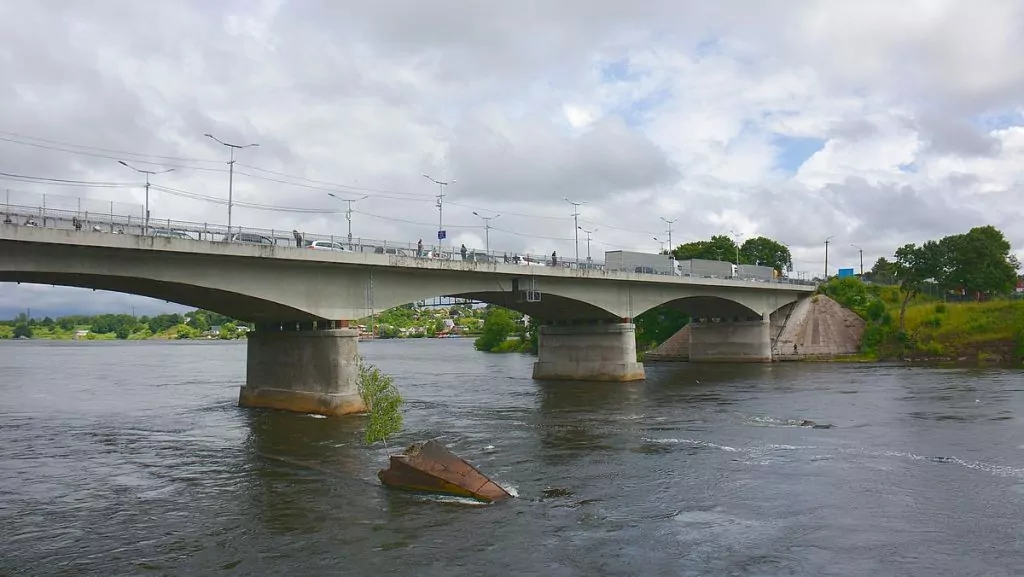
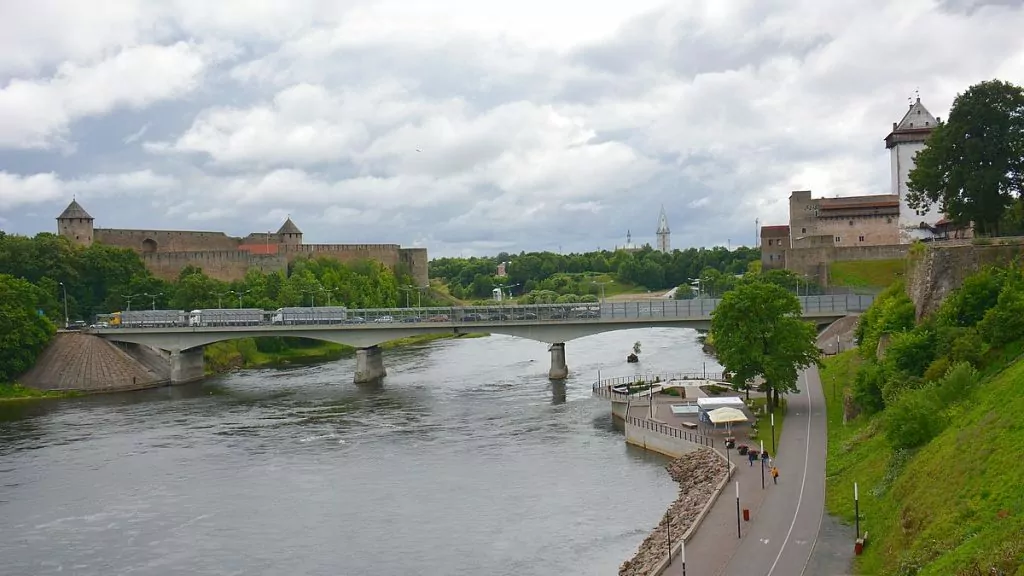
Hermannsborg - the castle in Narva
By far the biggest attraction in Narva is Hermannsborg Castle, built by the Danes in the mid-13th century. Opposite the castle, on the Russian side, is the Ivangorod Fortress, built by Grand Duke Ivan III of Moscow in 1492 on the Russian side of the river. The two castles are so close together that it feels like you could swim between them, even if the water looked like it was flowing.
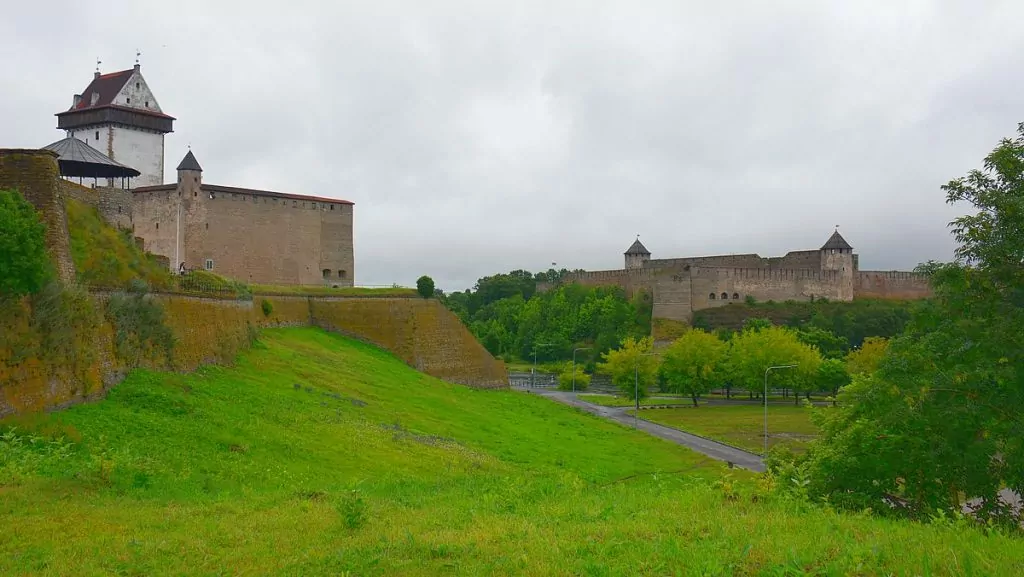
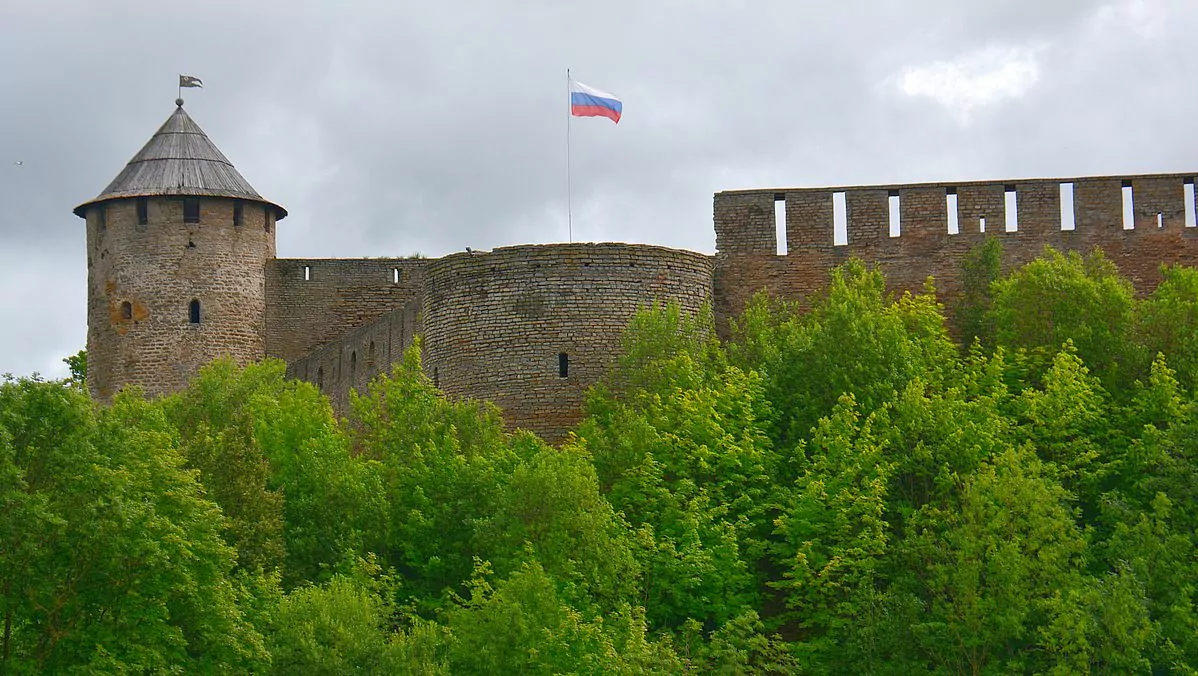
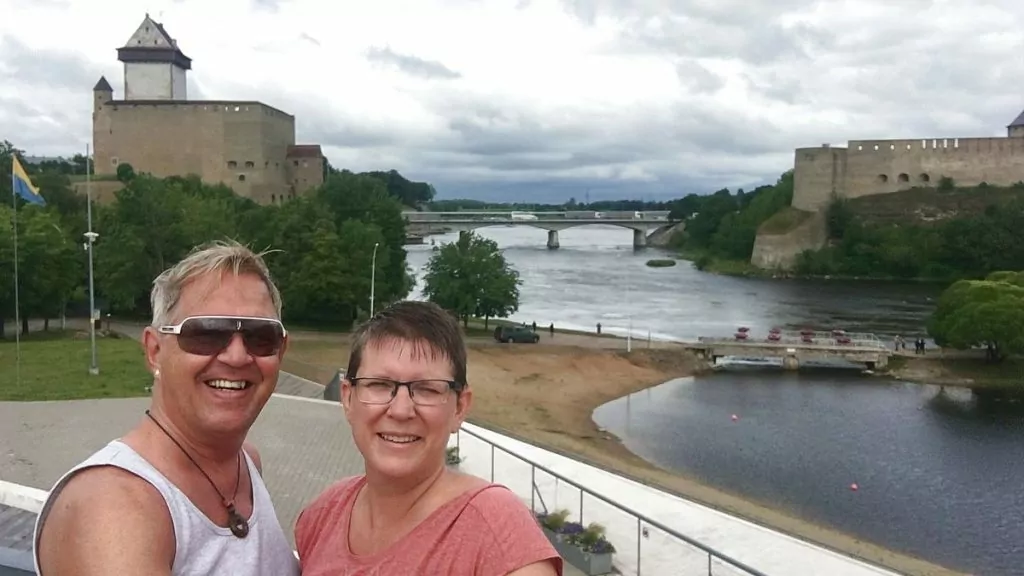
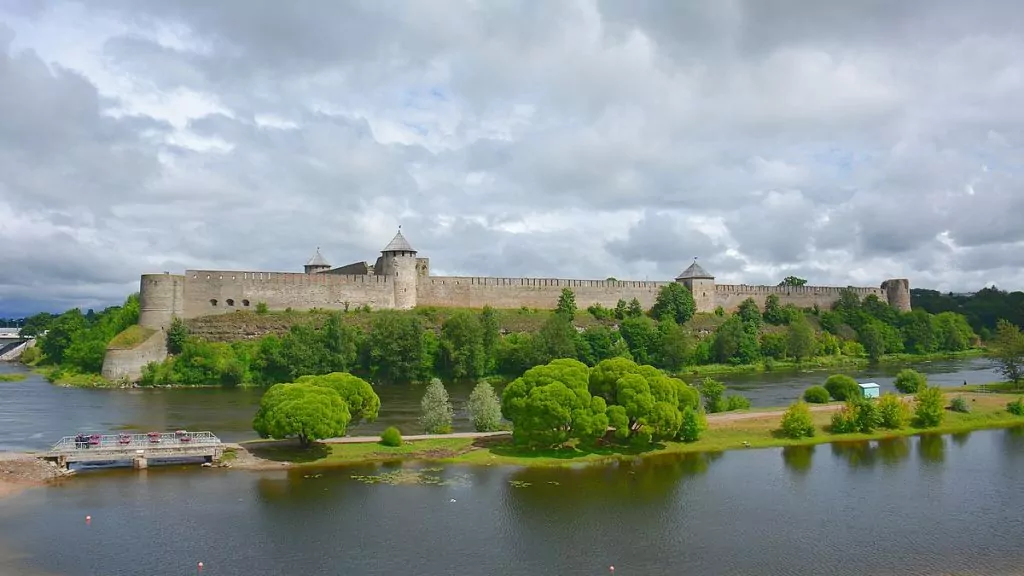
Visiting Narva Castle
If you visit Narva, be sure to visit Hermannsborg (Narva Museum), which includes a visit to the castle courtyard and a walk up the tower known as Long Hermann.
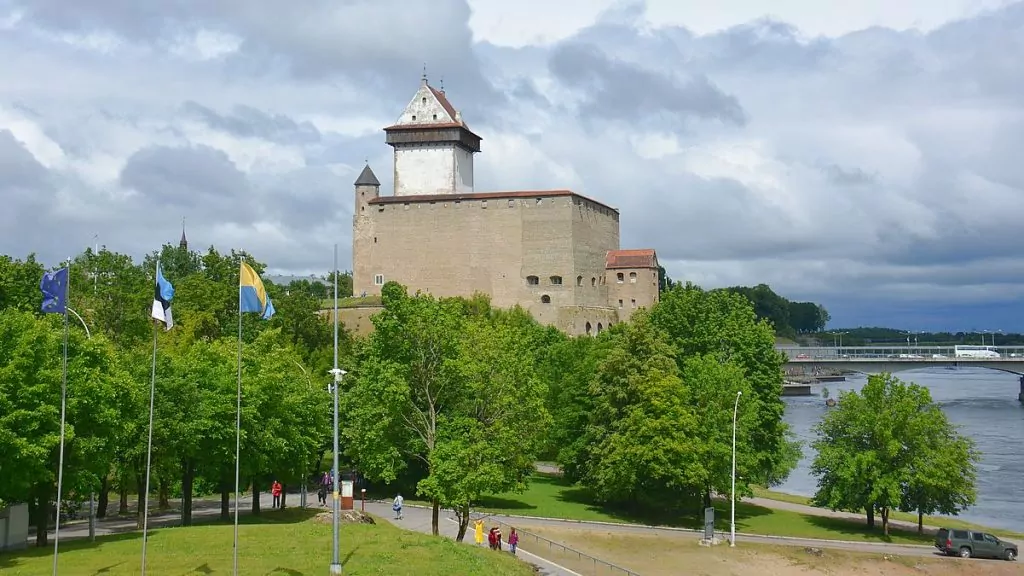
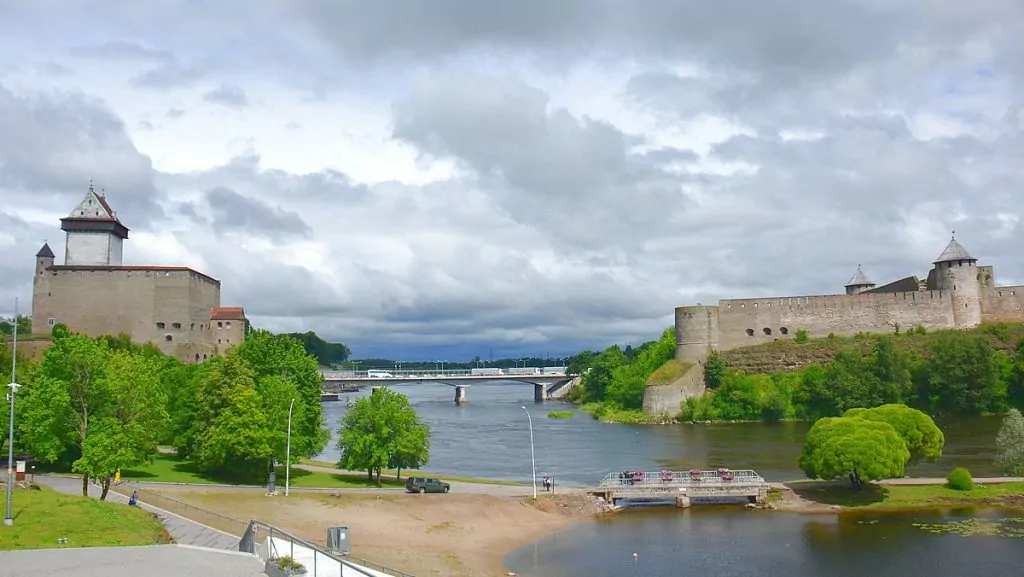
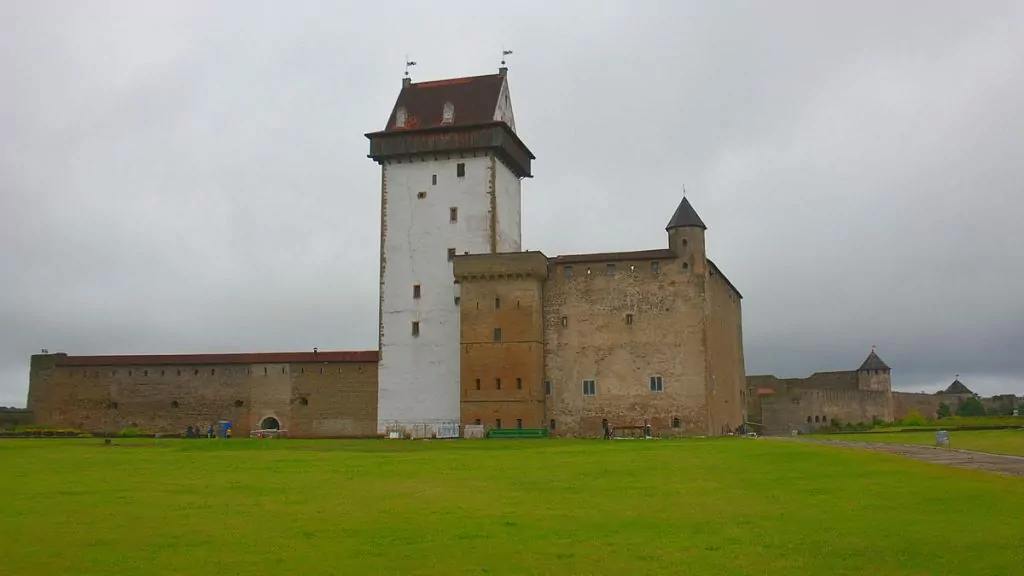
Just like when we visited Rakvere Fortress the courtyard was full of activities, mainly in the form of a smithy, an old-fashioned pharmacy and various stalls.
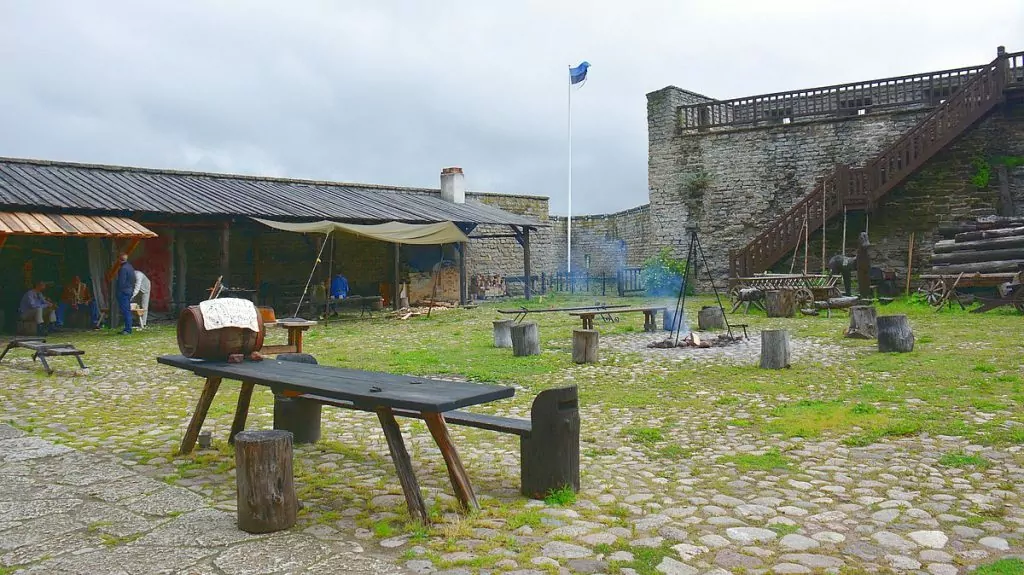
When you buy your ticket, you get a coin and for this coin you can buy a small souvenir from one of the stalls.
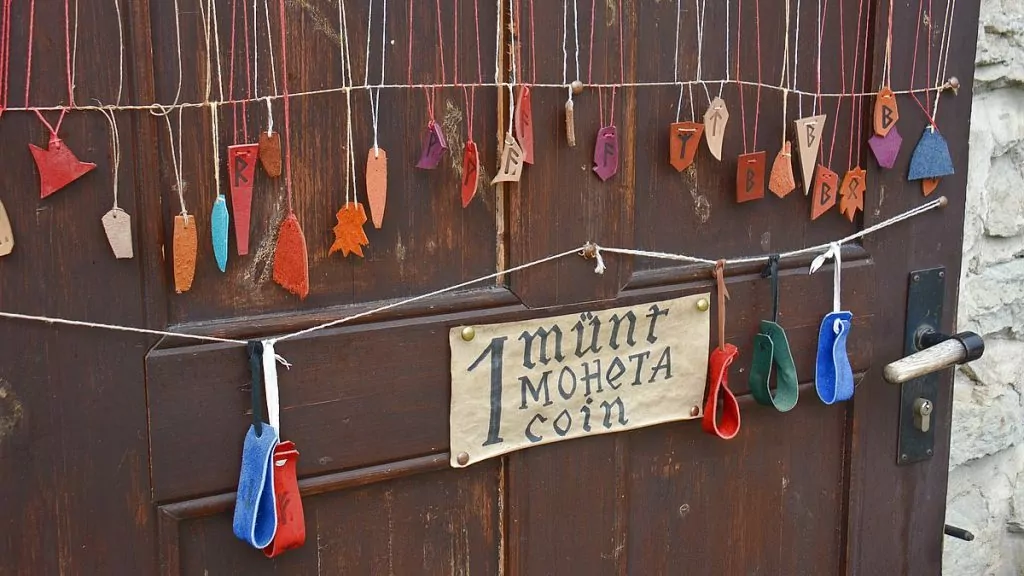
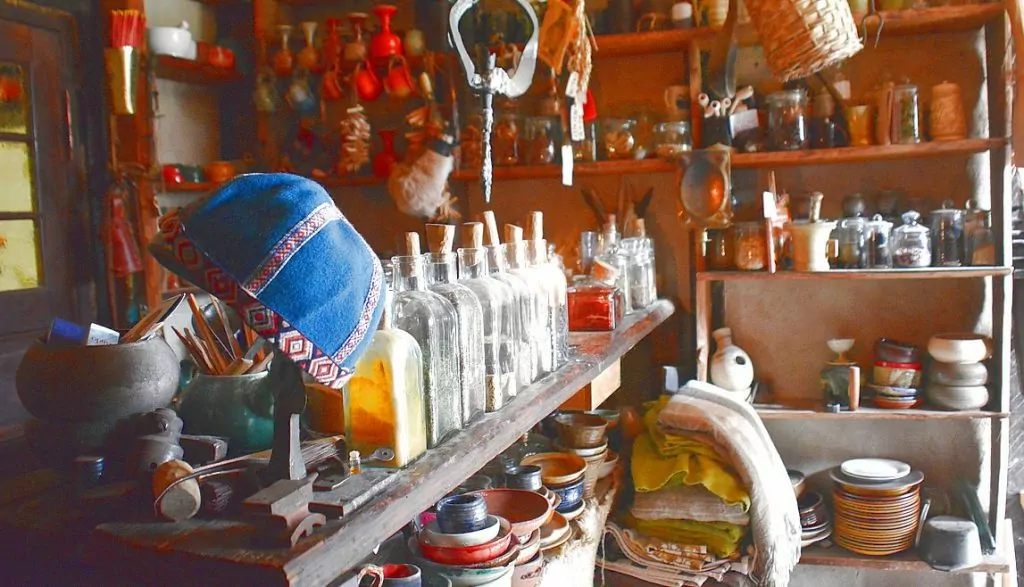
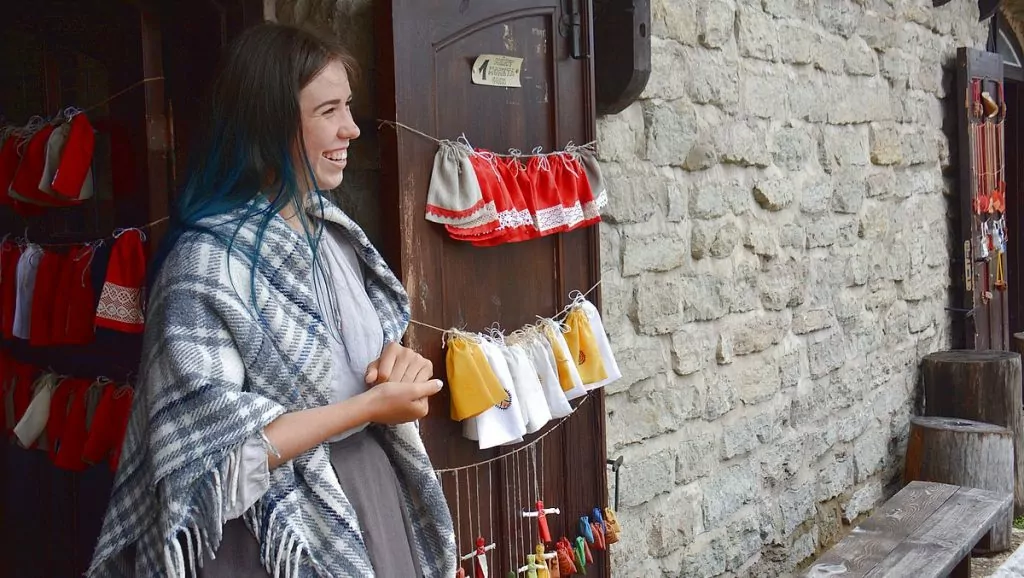
The Långe Hermann tower offers stair training, which is great for your calves, while you can check out a lot of history. A lot of the history is linked to Sweden and some signs and inscriptions are in Swedish, which makes the visit a bit more fun for a Swede.
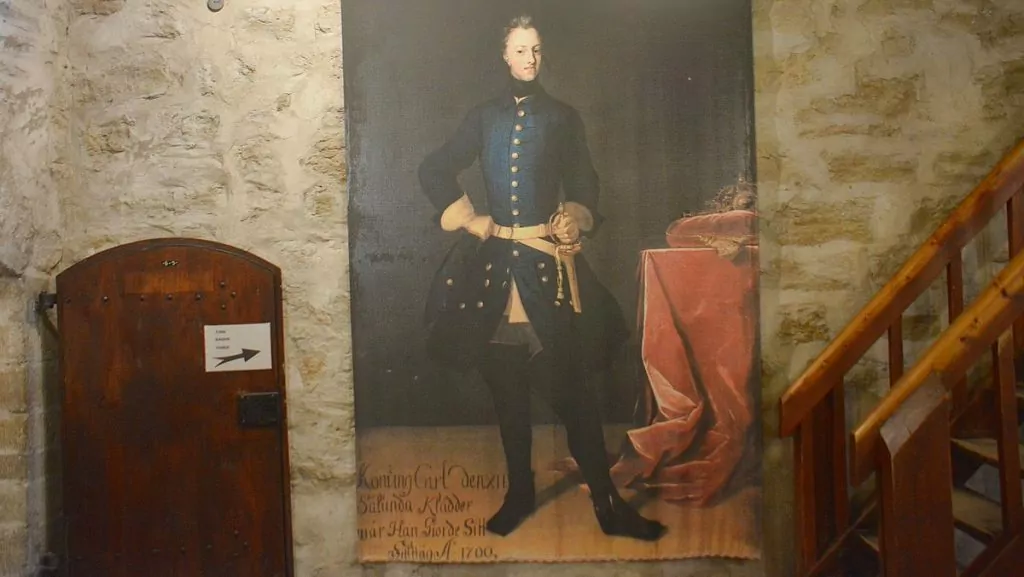
When you get to the top of the tower, your "reward" is a view of the Russian fortress in Ivangorod. If, like me (Helena), you're afraid of heights, you can leave your camera in safer hands for the last few metres and look at the pictures afterwards ...
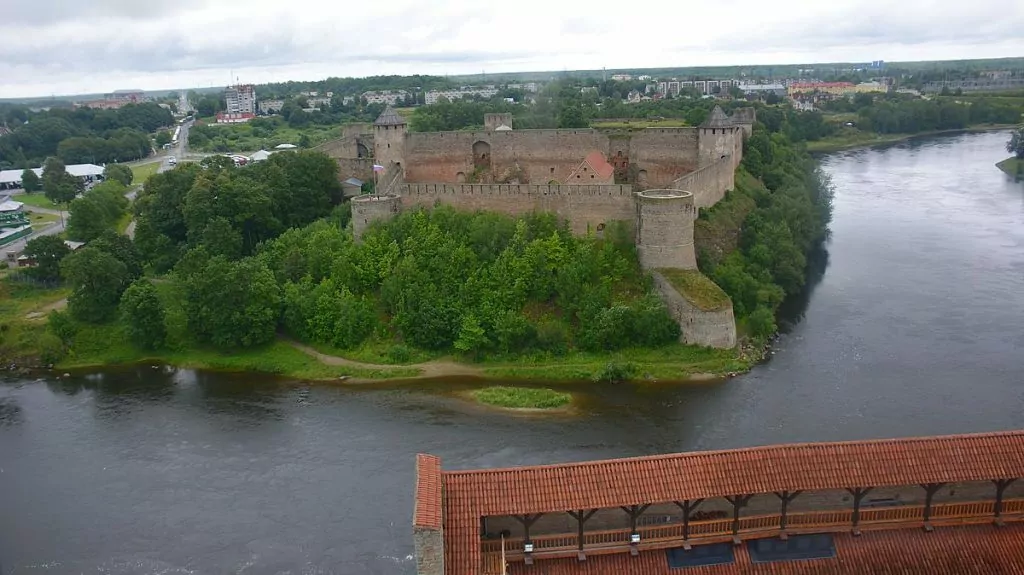
The Swedish lion in Narva
The Swedish lion was first erected in 1936 to commemorate the Battle of Narva, but was destroyed during the Second World War. A new monument was unveiled by Deputy Prime Minister Lena Hjelm-Wallén in 2000 on the occasion of the 300th anniversary of the Battle of Narva. The new monument was erected as a memorial to all those who died in the battle, and also as a mark of contemporary co-operation between Estonia and Sweden.
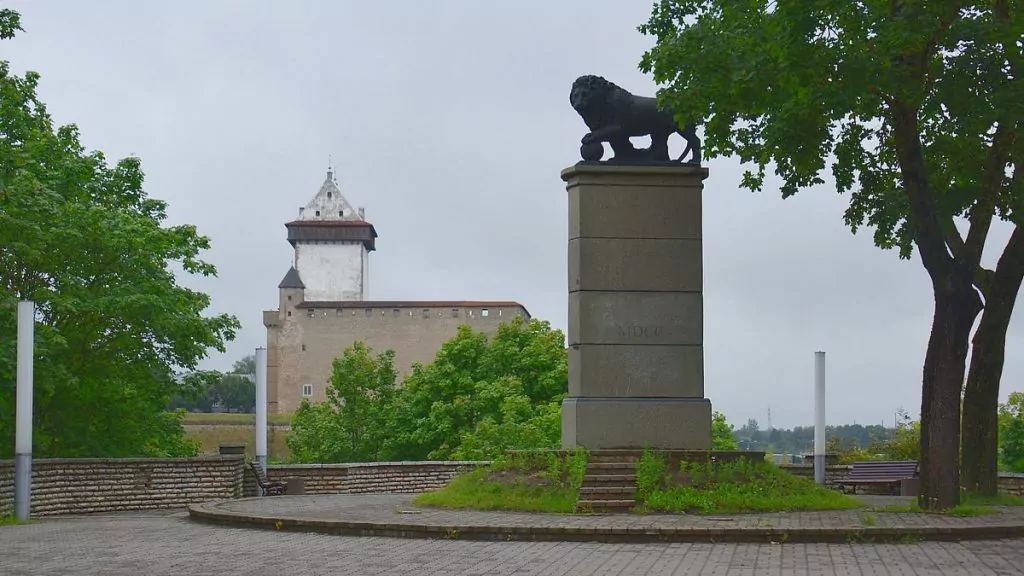
Victoria Bastion in Narva
The Victoria Bastion has experienced several wars. The bastion was unfortunately closed when we were here (it's open during the summer season, but closed on Mondays and Tuesdays), but otherwise it's apparently an interesting place to visit.
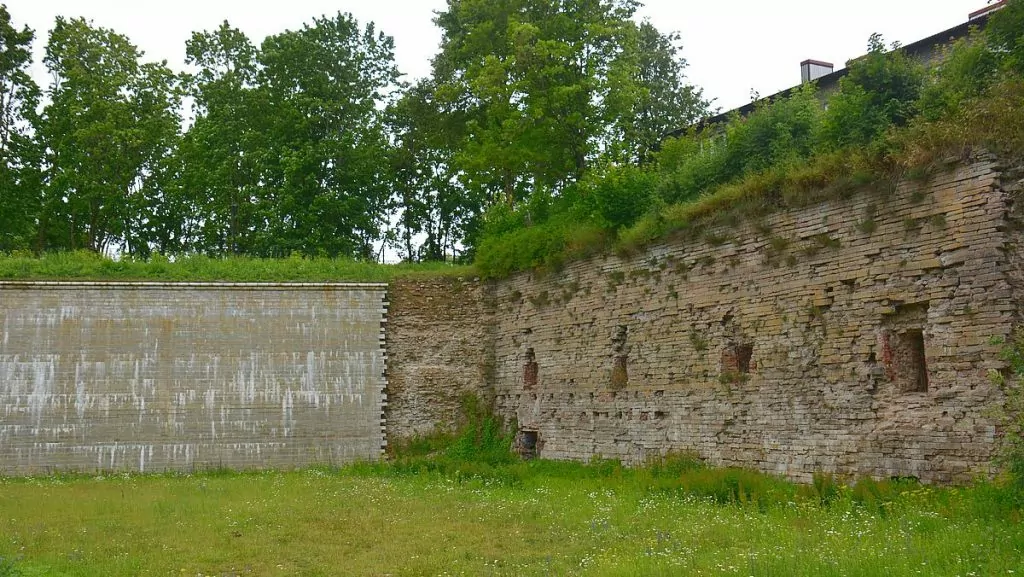
Alexander Cathedral in Narva
The Alexander Cathedral is a Lutheran church, built between 1881 and 1884. The roof and tower were destroyed by bombs during World War II, and the church began to be rebuilt in the late 1950s. The church was closed when we were here, so we couldn't peek inside.
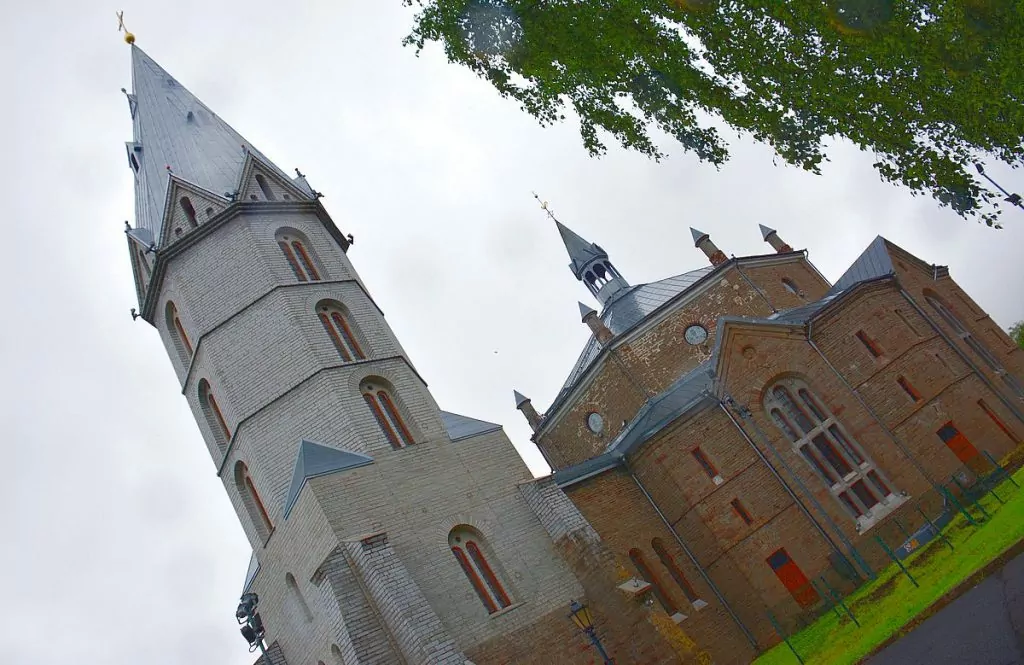
Voskresen cathedrals
The Voskrenseki Cathedral, or 'Cathedral of the Resurrection', is a Russian Orthodox cathedral that began construction in 1890, commissioned by Tsar Alexander III. This church was open and we were able to peek at all the gilded icons.
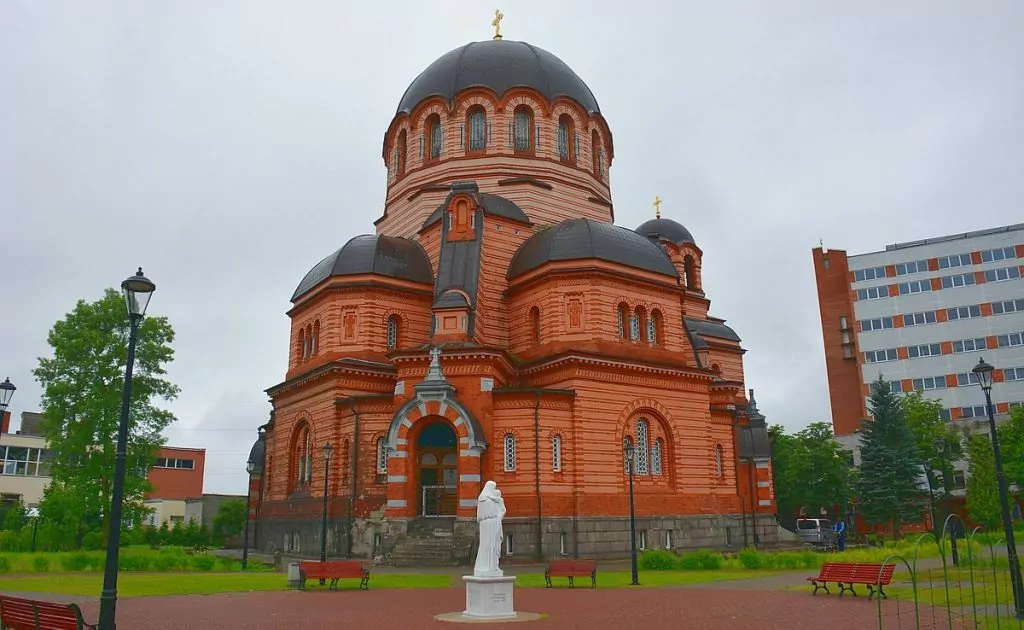
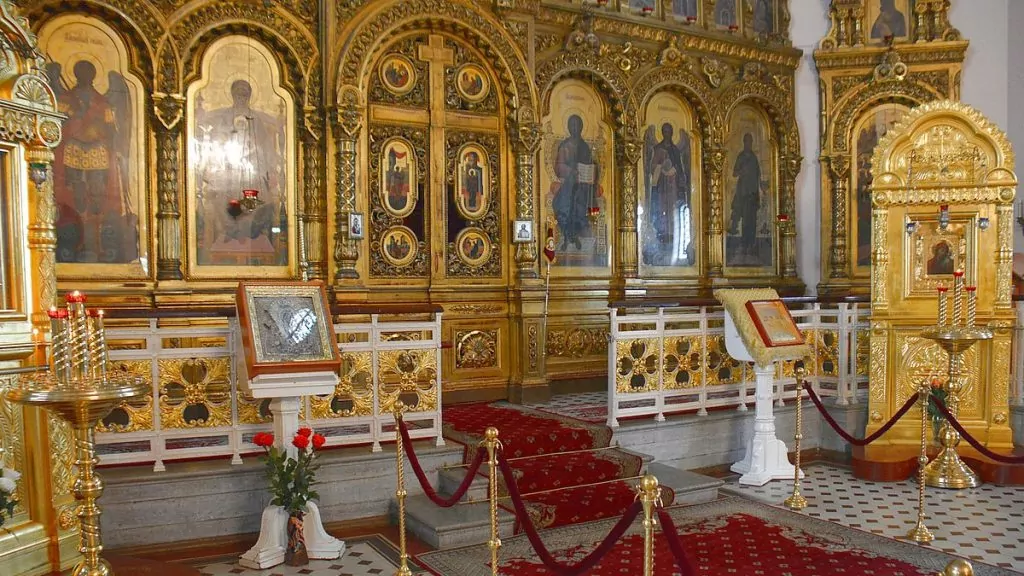
Narva University and Town Hall
Some other buildings that are a bit interesting to look at are the Town Hall and the University. The Town Hall was built in the Baroque style in 1665-1671 in the then Swedish town of Narva. The University, which is right next door, is built in a much more modern style.
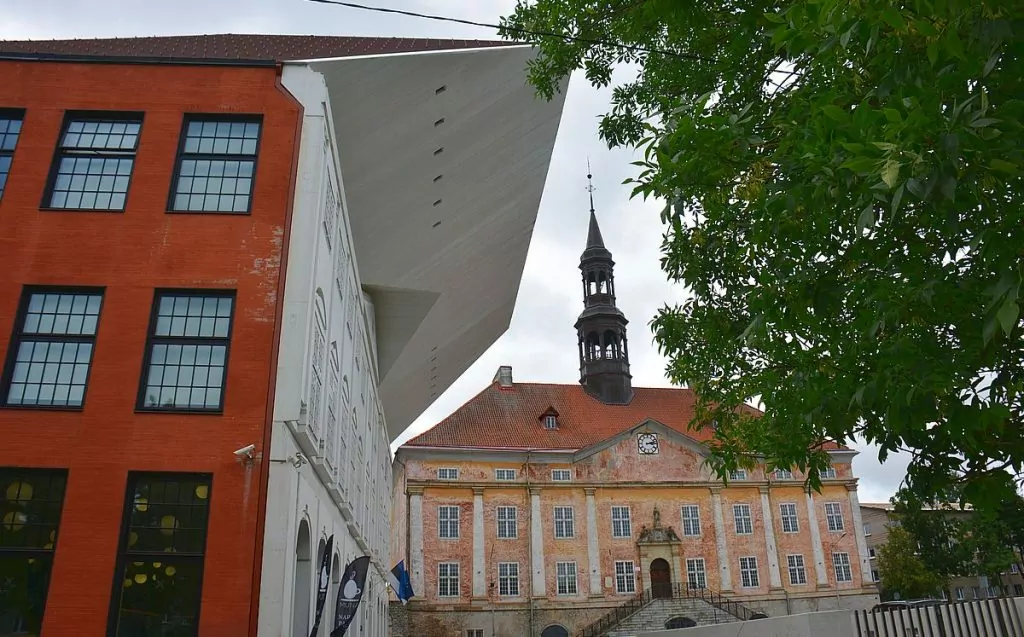
Narva riverside promenade in Estonia
The city's riverside promenade runs alongside the castle, overlooking Russia. It is a pleasant walkway with sculptures and a summer café.
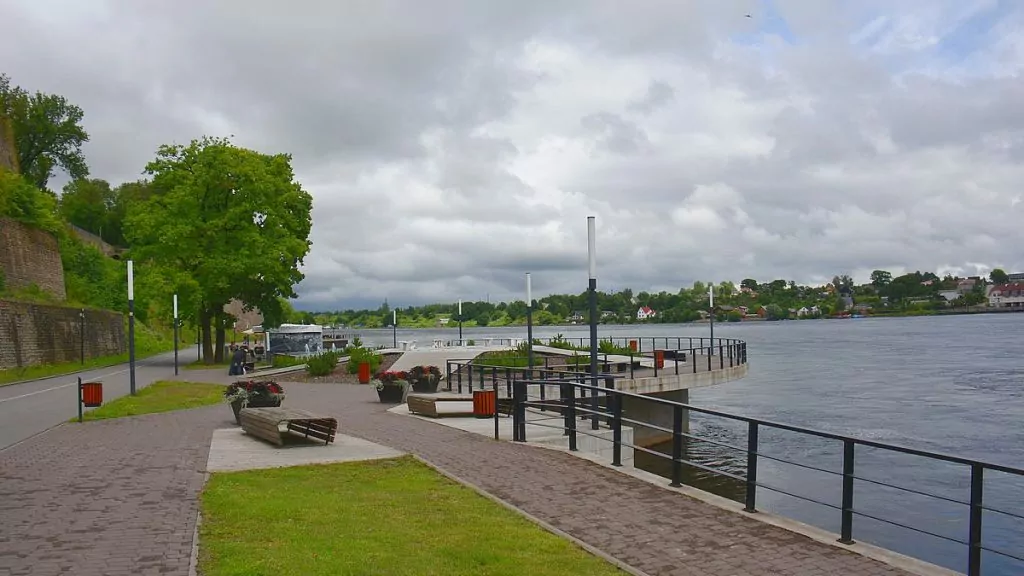
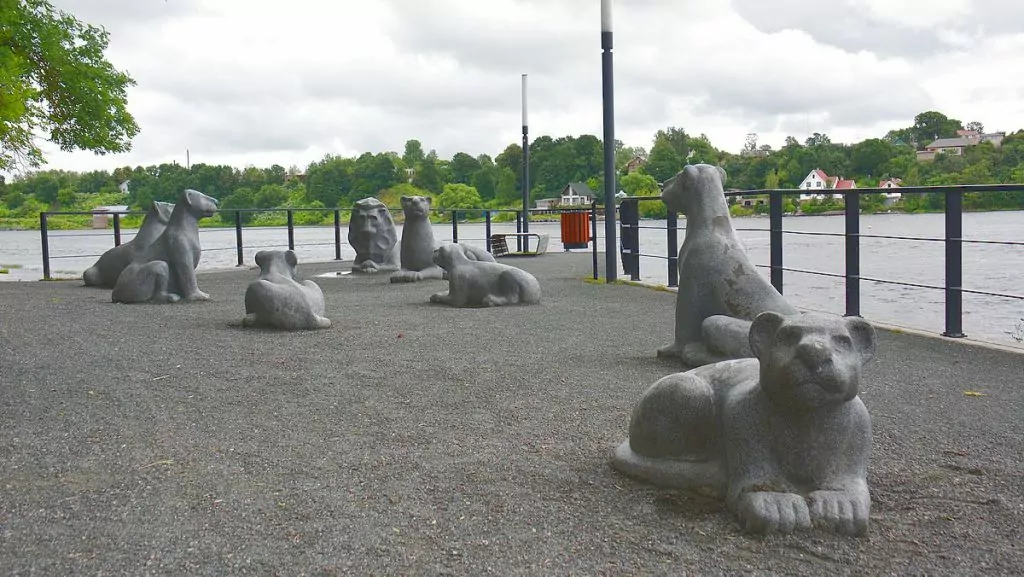
The beach in Narva - Narva-Jõesuu rand
Approximately 13 kilometres north of Narva, at the mouth of the Narva River in the Gulf of Finland, is the stunningly beautiful sandy beach of Narva-Jõesuu rand. The beach is wide and the sand is fine-grained and soft. This is naturally a popular beach when the weather is nice. When we were here, the rain was hanging heavily in the air, so there was no swimming for us ...
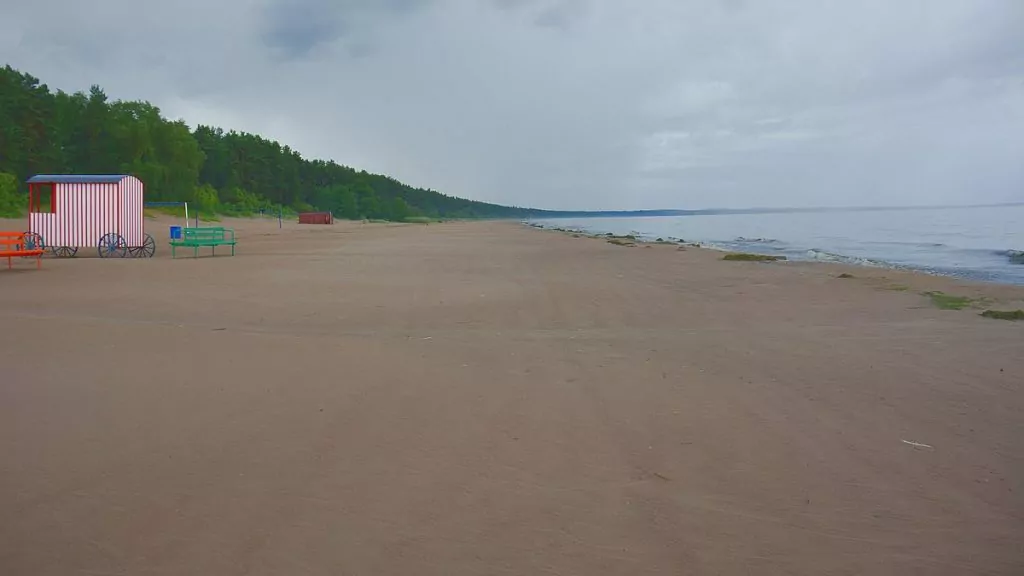
Camping Vana Olgina, at Narva in Estonia
There are not many campsites around Narva, and we drove to the closest one we could find: Camping Vana Olgina. This is a well-maintained but different place. On a large green lawn you will find everything from boats and cars, to a pond with fish and an outhouse that looks like a small Indian tent. The friendly owner is from Russia, but even though Russia is a stone's throw away, he hasn't been back for 30 years.
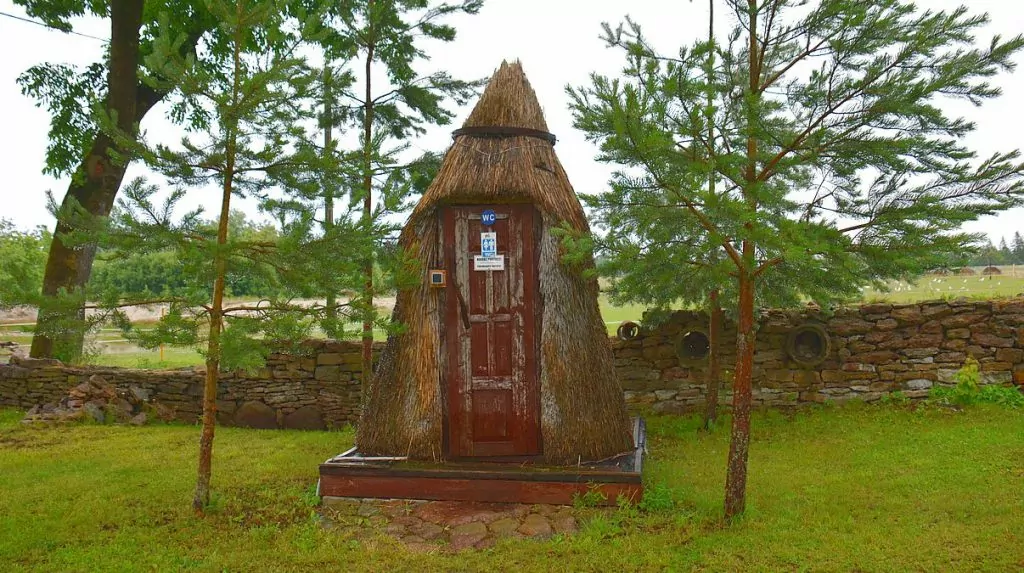
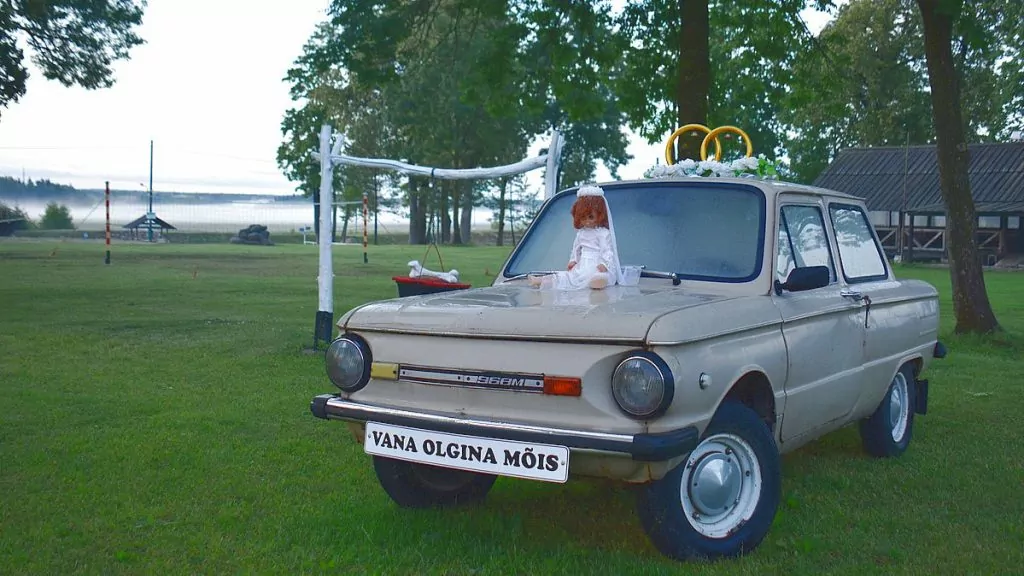
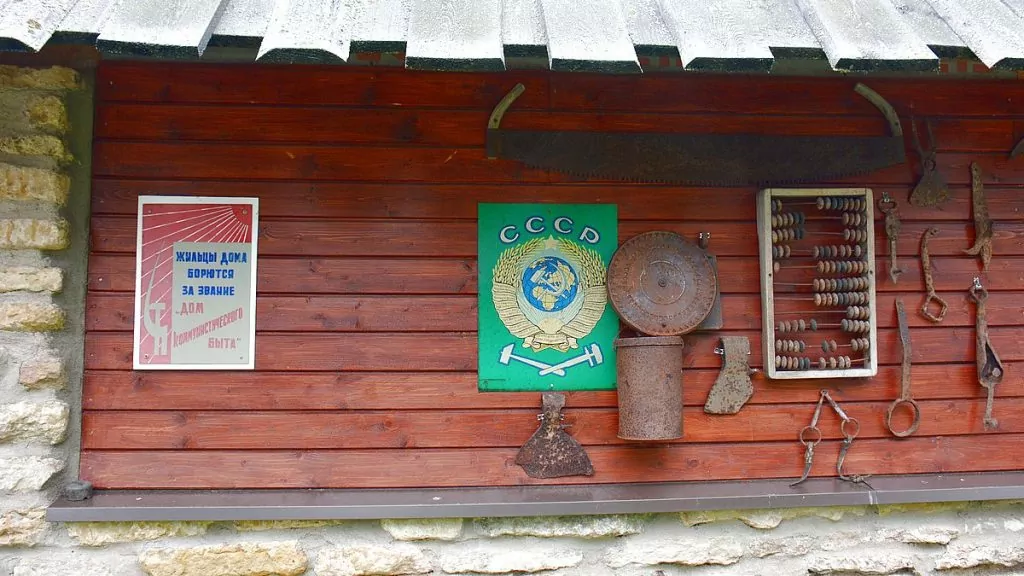
It was raining heavily when we arrived and we quickly crawled into the motorhome. A little later in the evening the rain eased and the fog crept in. For once, Peter took out his camera (he usually films) and took some nice evening photos.
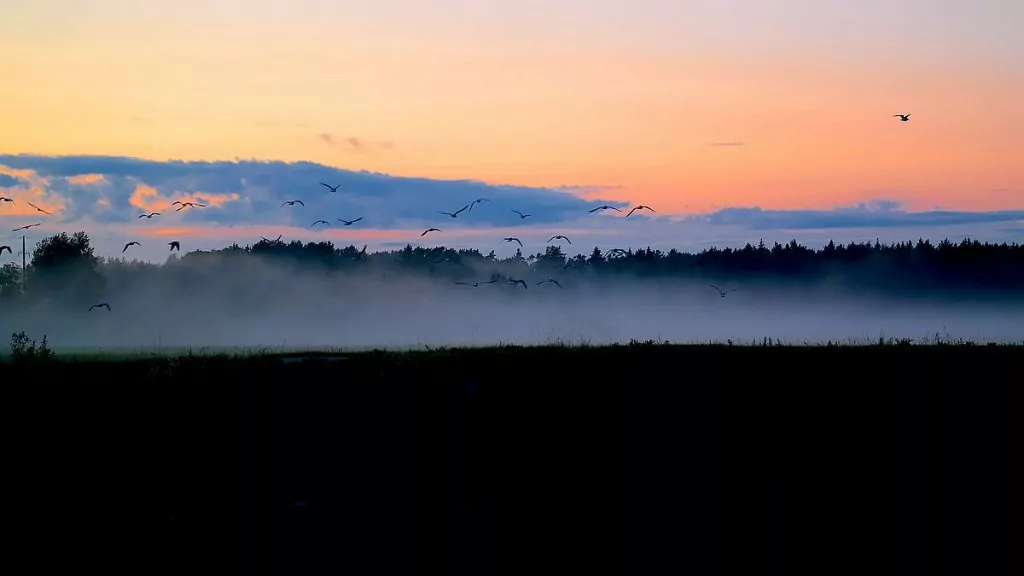
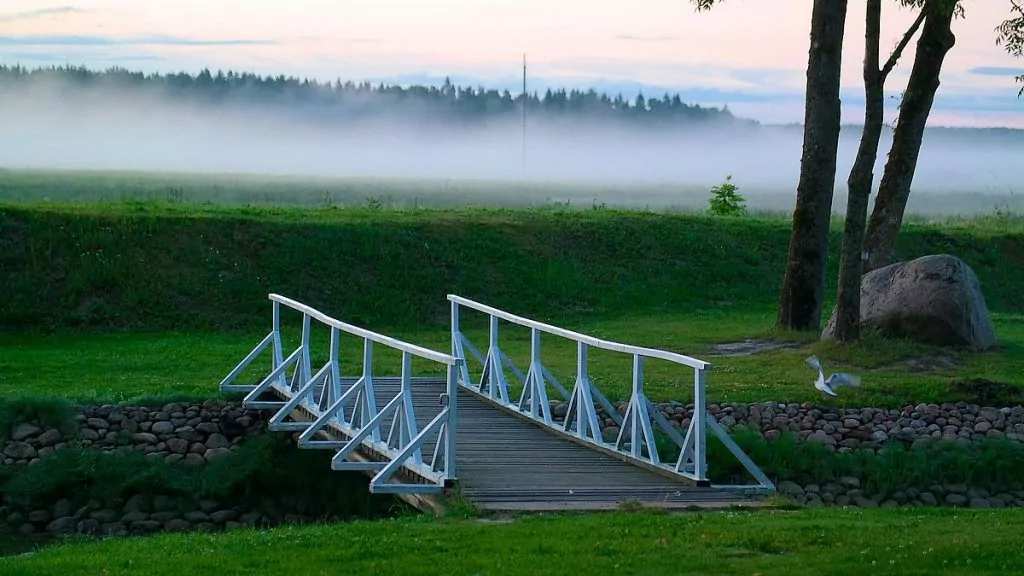
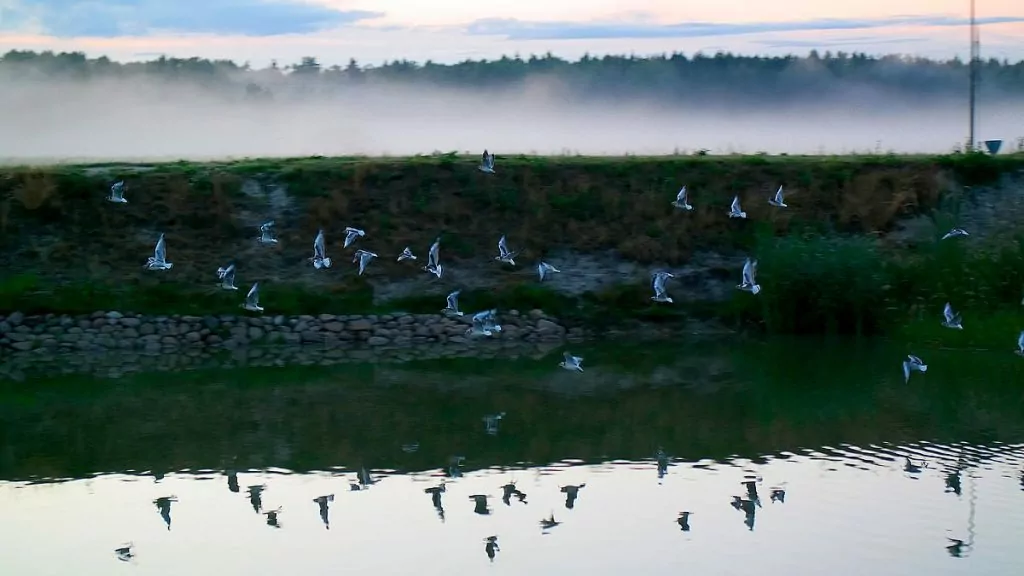
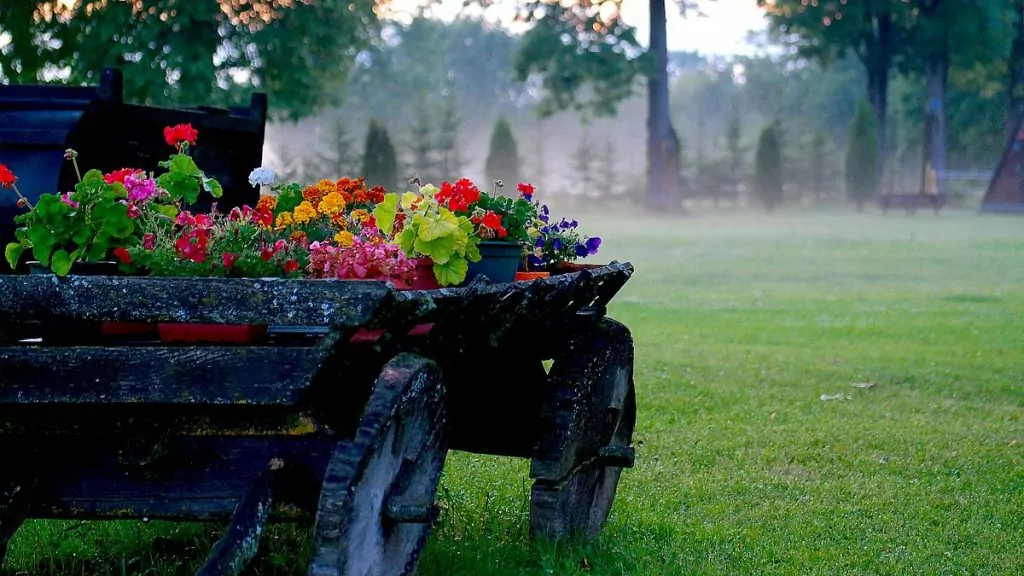
Film from Narva
Ferry to Tallinn - what not to miss
If you follow our blog, you know that we travelled by ferry to Tallinn during the Easter holidays. We...
Facts about Estonia - 30 things you (might) not know
Here are the facts about Estonia - 30 things you (maybe) didn't know about the country. Estonia is...
Cruise Stockholm - Tallinn with Victoria I
We have been on a cruise Stockholm - Tallinn with Victoria I from Tallink Silja Line. So...
Proto discovery workshop - experience centre in Tallinn
The Proto Discovery Workshop is an experience centre in Tallinn where you can discover and experience early technological developments,...
Guided tour of Tallinn - the Kalamaja neighbourhood
Today you can join a guided tour in Tallinn, Estonia! We love guided tours. When...
Pärnu in Estonia - beaches, spas and villas
In cooperation with the Estonian Tourist Board Pärnu in Estonia is known for its beaches, spas and...
Haapsalu, Estonia - noise village charm on the coast
In collaboration with the Estonian Tourist Board Haapsalu in Estonia is a beautiful wooden town on the Estonian coast....
Dagö in Estonia - among lighthouses and Swedish history
In cooperation with the Estonian Tourist Board Dagö in Estonia is a green and scenic island, where...
The cliffs of Ontika in Estonia - and Oru Park in Toila
In collaboration with the Estonian Tourist Board The cliffs of Ontika in Estonia are dramatically steep rock faces that plunge into the...
10 things to do in Tartu, Estonia
What to do in Tartu, Estonia? We spent three days in this...
Ferry to Estonia - Tallink silja vs DFDS
Ferry to Estonia, which one to choose? On our last trip to Estonia, we tried two different ferry...
An excursion to Kadriorg Palace in Tallinn, Estonia
It's all over the place here! A few days ago we were in Malta and now we are in...
Lake Peipus in Estonia - village festivals, onions and old-timers
Lake Peipus in Estonia is located in the eastern part of the country and is known for its...
What to do in Tallinn - 30 sights and experiences
Looking for tips on things to see and do in Tallinn? We've visited Estonia...
Saaremaa in Estonia - the island of windmills
Saaremaa in Estonia is an island in the Baltic Sea the size of Gotland, known to all...
Rummu quarry in Estonia - prison turned bathing paradise
In cooperation with the Estonian Tourist Board Rummu quarry in Estonia is a very different sun and bathing paradise,...
Motorhome holiday in Estonia - starting in Tallinn
We're finally off on a motorhome trip in Estonia, exploring the country for three weeks! We...
Tourest 2020 travel fair in Tallinn - travel destinations and delicacies
We have visited the Tourest 2020 travel fair in Tallinn, Estonia. Really fun and inspiring! The fair offers both ...
Lahemaa National Park in Estonia - nature and mansions
In cooperation with the Estonian Tourist Board Lahemaa National Park in Estonia is a large natural area that offers...
Things to do in Estonia - 30 sights and experiences
What to see and do in Estonia? We offer 30 tips for a country...
2 good hotels in Tallinn, Estonia - luxury or colour?
We have now tried two different good hotels in Tallinn, Estonia. The first night we stayed ...
Kynö in Estonia - the island where women are in charge
In cooperation with the Estonian Tourist Board Kynö in Estonia is a small and very special island. It...
Rally Estonia in Tartu - a great festival of people
In cooperation with the Estonian Tourist Board Rally Estonia in Tartu is a great folk festival that attracts...
Keila waterfall in Estonia - and a romantic park
In cooperation with the Estonian Tourist Board Keila Waterfall in Estonia is the country's third largest waterfall and is located...
Rakvere fortress in Estonia - history and spectacle
In cooperation with the Estonian Tourist Board Rakvere Fortress is located on a hill in the town of Rakvere in the north of...
Travelling by motorhome in Estonia - all you need to know
What is it like travelling with a motorhome in Estonia? We have just returned home after barely...
The highest mountain in the Baltics - Suur Munamägi in Estonia
In cooperation with the Estonian Tourist Board We have "climbed" the highest mountain in the Baltics - Suur Munamägi in Estonia....
Exploring the port of Tallinn, Estonia
One of the best things about travelling is discovery. Going on unplanned...
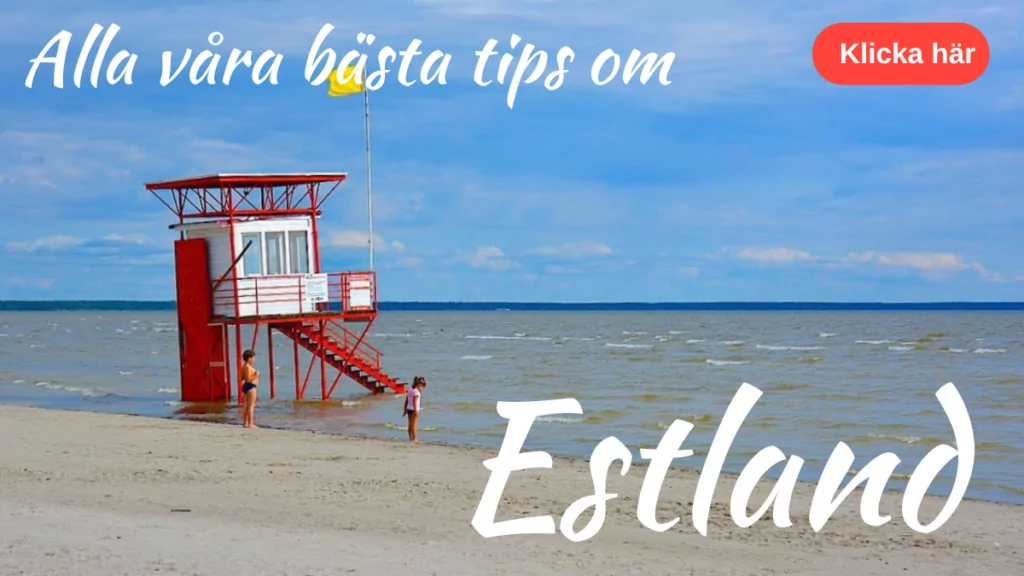
Facts about Narva in Estonia
- Country: Estonia
- Landscape: Ida-Virumaa
- Municipality: City of Narva
- Population: 57 000 (2017)
- Language: Russian and Estonian
- Travelling here: Narva is 190 kilometres east of Tallinn and takes about 2.5 hours to reach by car from the capital.
History of Narva
- 13th century: The Danes established their rule in Estonia in the early 13th century.
- 14th century: In 1346 it was sold to the Teutonic Order and became an important trading centre.
- 16th century: In 1558, the city was captured by the Russians under Tsar Ivan IV. With the collapse of the German Order, the historic Wierland region, to which Narva belonged, came under Swedish protection.
- 17th century: In 1648 Narva was temporarily blockaded by the Russians and in 1659 the whole town burned down, but was rebuilt again.
- 18th century: In the autumn of 1700 the Russians attacked the city and on 20 November 1700 the Battle of Narva was fought. The Swedes lost around 700 men and 1200 wounded, while the Russians lost 10 000-12 000, some of whom drowned trying to escape. In 1704, the Russians besieged Narva and finally had to give up the city. The majority of the inhabitants were deported by the Russians.
Facts about Hermann Castle in Narva, Estonia
- Address: Peterburi mantee 2, Narva, Estonia
- Opening hours: Every day 10:00-18:00
- Price: During the 2019 summer season, adults pay €8 and children €4. The price includes a coin to buy a souvenir. Please note that prices are subject to change.
- Service: There are toilets and a restaurant at the ticket office.
- Accessibility: To visit the tower, you have to climb a relatively large number of rather steep stairs.
Programme "Promoting Estonia as a Tourism Destination" is supported by European Union Regional Development Fund.

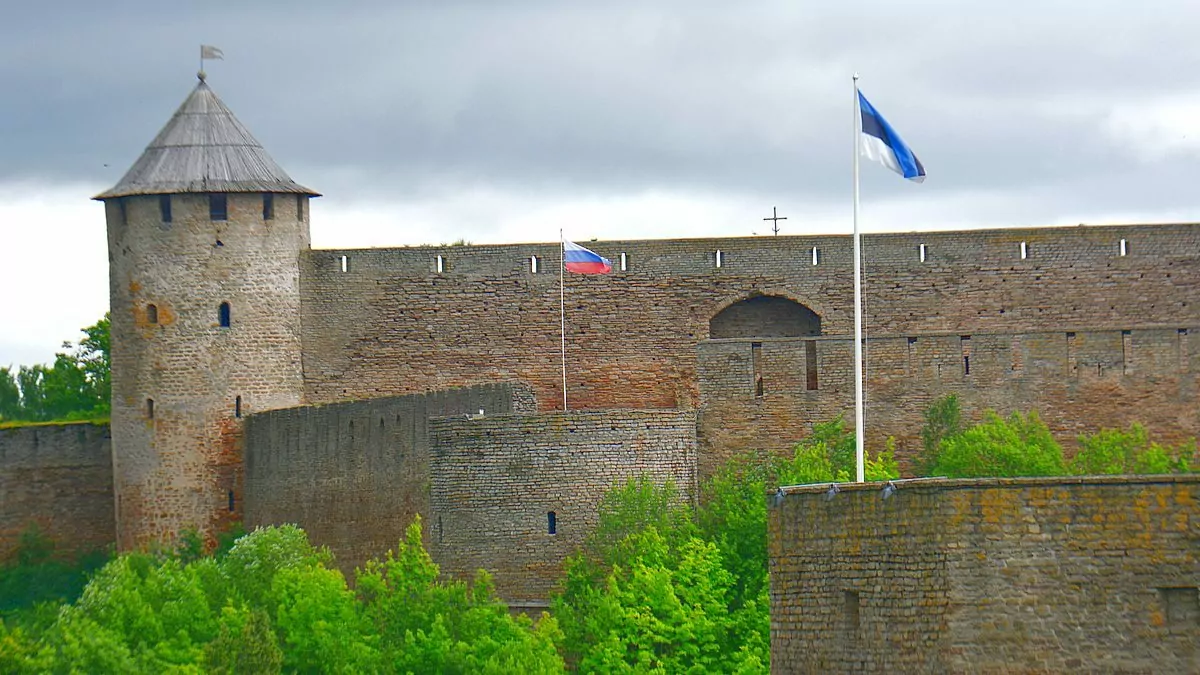










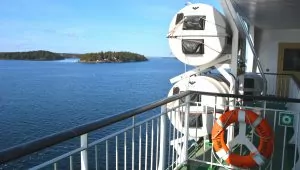
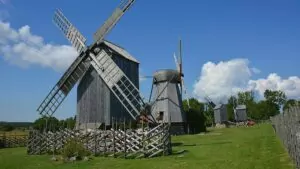
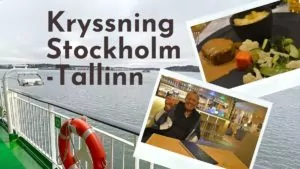
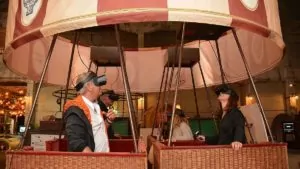
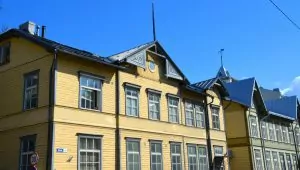
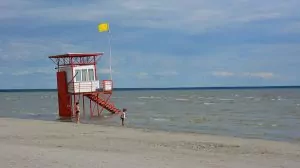
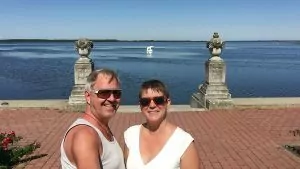
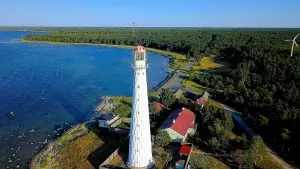
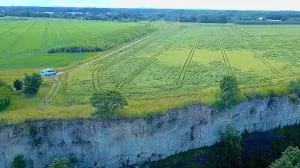
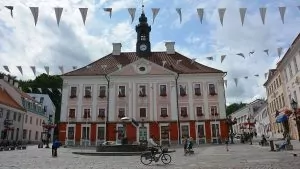
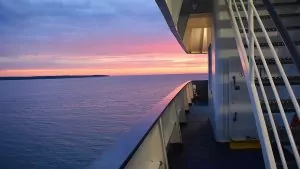
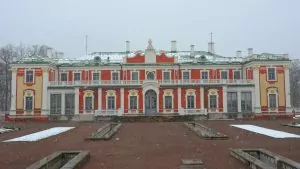
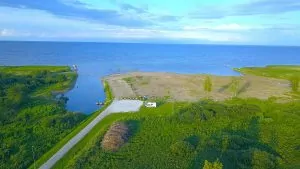
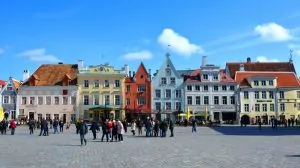
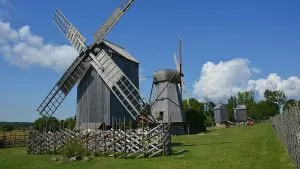
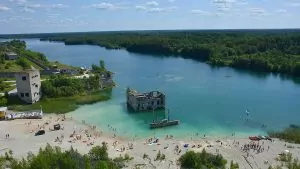
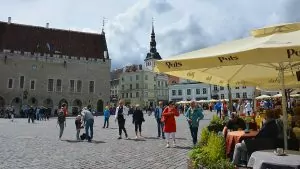
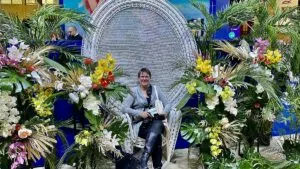
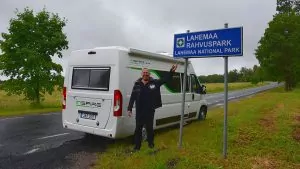
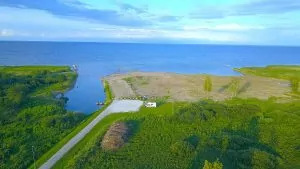
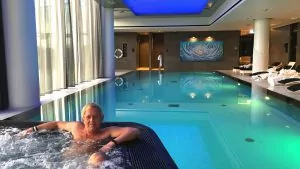
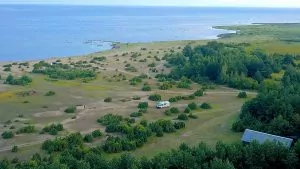
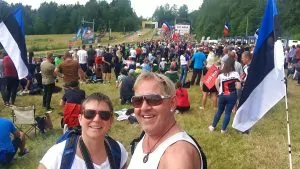
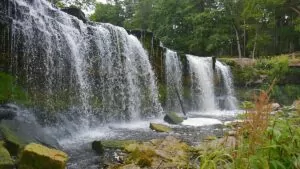
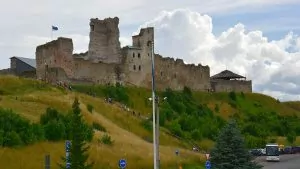
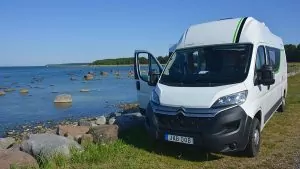
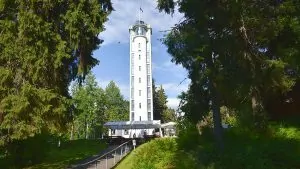
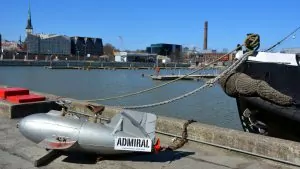
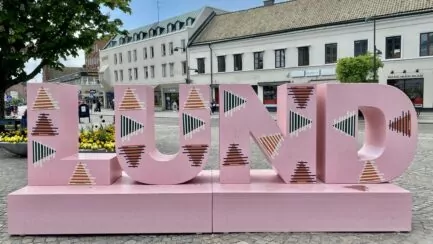
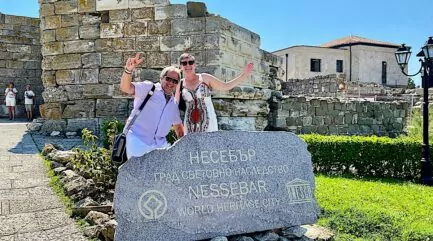
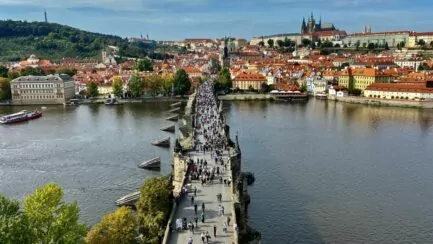
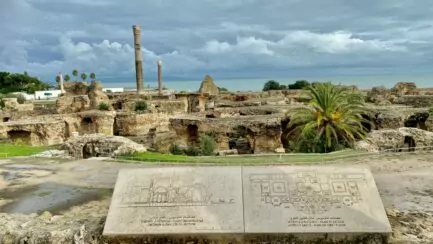
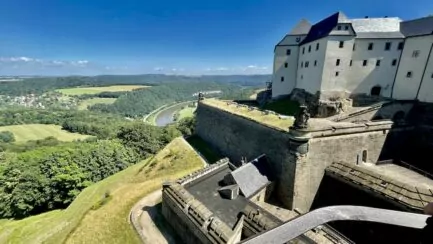
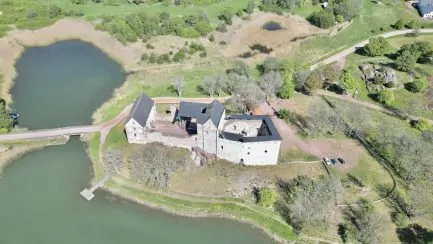



Nils-Åke Hansson says:
Felt exactly the same in Finland when we were on the border with Russia. Birgitta and I went for a walk and came to a place where the birch trees were lined up. When we came back, we saw the sign saying not to go there. Were we in a safety zone?
11 July 2019 - 8:47
Helena says:
Especially in the border areas! Within the EU you don't notice much, but with Russia it's a different matter ...!
11 July 2019 - 10:36
JoY says:
That was very interesting information about Narva, which I will find out where it is, I don't recognise the place from Linnegatan hahaha.
11 July 2019 - 9:36
Helena says:
Haha, you'll have to drive a bit further to get to Narva 😉.
11 July 2019 - 10:37
Ama de casa says:
I think I will replace "dare to refuse bail" with "fear of heights". That seems to work better 😉
Hope you won that chess game - you certainly looked very concentrated 🙂 .
To get to Narva... Do you start on Narvavägen? It sounds logical anyway 😀.
11 July 2019 - 10:03
Helena says:
Fear of heights works well! ? In this case I almost went all the way up, but I don't like high vantage points haha ?
11 July 2019 - 10:38
Elisabeth says:
I recognised myself there! I have many cards similar to yours. Keep up the good work!
17 July 2019 - 22:48
dianasdrömmar says:
What exciting places you are travelling to Hugs
11 July 2019 - 10:33
Helena says:
Estonia has a lot to offer! But have you been to Pärnu in Estonia? It is supposed to be the most spa-filled city in the world, if I understand correctly?
11 July 2019 - 10:40
Ditte says:
A visit here is always exciting and a great piece of history. I have been here a few times so the recognition factor in your pictures and text is high. And of course there is a lot of history, sea and beautiful places in Estonia.
Wishing you a continued good trip.
11 July 2019 - 13:03
Helena says:
Glad you were here and recognise yourself in our pictures! And thank you! ??
12 July 2019 - 8:56
Matts Torebring says:
How exciting to almost be able to look in in Russia.
11 July 2019 - 20:23
Helena says:
Interesting to be so close! ??
12 July 2019 - 8:56
BP says:
What gems you will find in Estonia! Narva is certainly no exception. The Resurrection Cathedral is fantastic, both inside and out, very typically Russian.
Russia so close to Estonia is reminiscent of Gdansk and its proximity to Kaliningrad.
11 July 2019 - 21:45
Helena says:
Yes, isn't it? We think we have found very nice and interesting places! Narva was very interesting to visit!
12 July 2019 - 8:57
David Eriksson says:
Interesting on Narva. Have lived in Estonia for 8 years but never been there. Many Estonians never go there but have started to notice a difference lately among Estonians who have started to visit Narva more often.
Narva has an even more interesting history linked to WWII. Here the Estonians together with the Germans held off the huge Soviet army for a long time at the end of WWII. The Battle of the Blue Hills is seen as a great achievement in Estonia, which it was. There should be an English subtitled Estonian documentary about it on Youtube.
13 July 2019 - 12:59
Helena says:
Interesting to hear! We have just wondered about the relationship between Narva and the rest of Estonia. Interesting also with the history! Very interesting that took place here!
13 July 2019 - 16:28
Göran Gunnarsson says:
On the way to Narva, I can recommend a stop in the town of Sillamäe. It has a real architectural history to tell. Completely destroyed during the war, the centre was rebuilt in the most typical Stalinist style. Around it in a circle is the Khrushchev style and then at the far end is the last Soviet era style. The city centre has been renovated so that the Stalinist architecture is truly visible. If you have a night to spare, you can check into the hotel which is in the same style and damn if the staff doesn't partly live in that era as well. For there, no guest would think they were something! It felt a long way like we should really be grateful for being guests there. we often laugh at this memory.
17 July 2019 - 20:17